The popularity of Mexican cuisine crosses borders. Join us as we bring it back to basics to uncover the tasty wonders of chamoy.

A little bit of heaven: chamoy is the ultimate Mexican condiment to bring your fresh fruit and veggies to the next level. Don’t forget the lime juice!
Looking for a tangy, spicy flavor in your mouth? Are you craving a sweet and sour dip for your fruits and veggies? Well, you’re in luck because you’ve come to the right place. Meet Mexico’s favorite condiment (slash dip, slash savory sauce, slash candy): chamoy.
What Is Chamoy?
Mexico is synonymous with spicy food, but chamoy just hits differently.
Chamoy is the quintessential Mexican condiment or dipping sauce used to season anything from beverages to crunchy snacks.
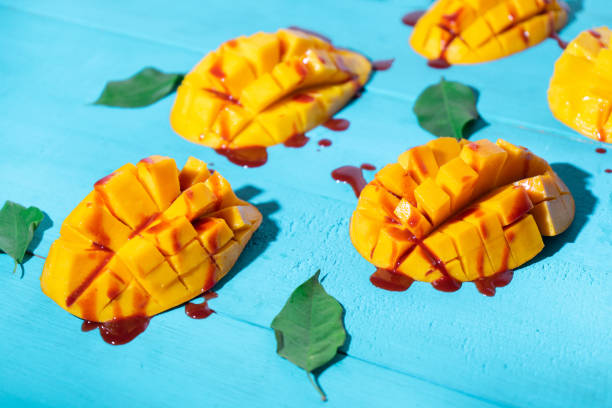
Did you really go to Mexico if you passed on fresh mango con chamoy? No Mexican food is complete without some spice!
There are now multiple variations of chamoy, but the original one is a red topping usually made from a mix of dried fruits—such as dried apricots, prunes, mango or plums. Chili powder and lime juice is then added to the dried fruit mixture.
You may also find different kinds of chamoy: made with flor de jamaica (hibiscus flowers), pineapple, watermelon and tamarind. It is also found in different consistencies, from liquid or “chamoy sauce,” to chamoy paste and even powder forms.
What Does Chamoy Taste Like?
Chamoy tastes neither too spicy nor too sweet: such well-balanced sweet and spicy mix creates a layered blend of rich flavor. It has a sweet and sour taste, and a sweet smell.
This cupboard staple is characterized by its versatility and the craft behind its unique spike. Sweet, sour, tangy and spicy, chamoy adds loads of complexity your mouth will definitely enjoy.
Thanks to its natural origins, chamoy is the perfect low-fat, gluten free, vegan-friendly snack!
Where Did Chamoy Come From?
Chamoy is now closely associated with Mexican food and culture, but it wasn’t always that way. While its exact origin isn’t known, food historian Rachel Laudan believes that the earliest origins of chamoy arrived with Chinese immigrants between the 16th and 19th centuries.
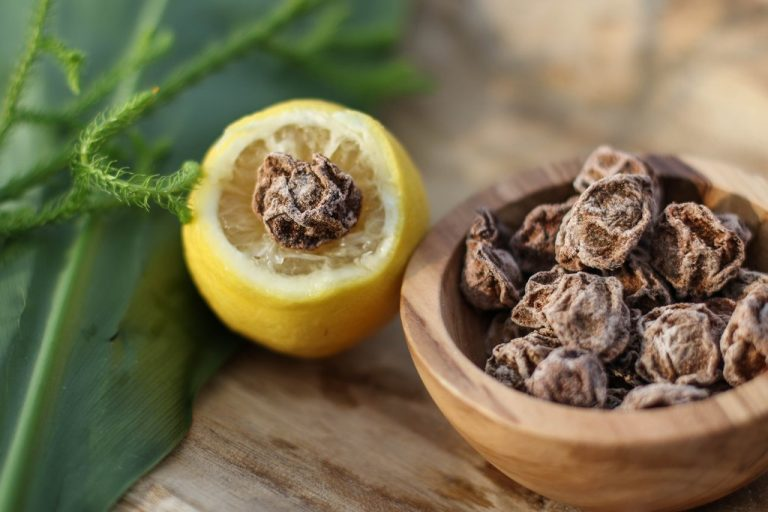
Where it all began: Chinese see mui.
See mui (pronounced see moy) began in China as a salty, dried apricot snack. Now say it out loud: See mui… Sounds just like chamoy, doesn’t it?
Eventually, see mui was given a Mexican twist by adding spicy chile peppers and other dried fruit, erasing its Chinese origins completely. The original Mexican chamoy (or saladito) was a dried, salted snack made out of small, sour apricots.
By the 1970s, candy companies, such as Dulces Miguelito and Lucas, began mass-producing chamoy candy and sauce, and it became synonymous with Mexican culture and a favorite especially among children.
Whether you’ve already been or are planning your next south-of-the-border getaway, you’re most likely to stumble upon little kids salivating over chamoy candy.
Throughout the years, street-food vendors in both Mexico and the United States have reinvented chamoy as a hot sauce. You can find it garnishing mango and cucumber slices, mixing into esquites or lining mangonada glasses.
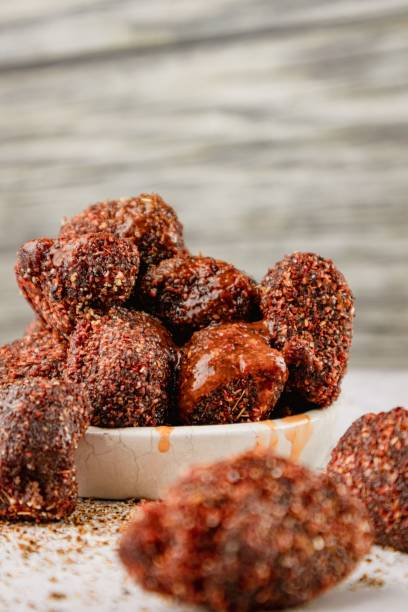
Give a kid chamoy-drenched candy, and they’ll love you forever.
You’ll certainly see this red, liquid candy drizzled on top of spicy chips (yes—the spicier chips, the better), on gummies and shaved ice, or sprinkled on freshly cut fruits and vegetables.
Did you spy candy apples? They were actually chamoy-covered apples!
How To Use Chamoy?
Whether store bought or homemade, if you’re one of those people that have a savory tooth (us included), you’ll find it very easy to combine any kind of snack, fresh fruit or beverage with chamoy.
As we mentioned earlier, chamoy comes in many forms: paste, sauce, and seasoning powder.
Read on. Here’s all you need to know.
1. Using Chamoy Paste
Chamoy paste is without a doubt a classic staple in candy stores all over Mexico. It’s also known as “apple paste” as it’s popularly used to coat apples with.
But the fun does not end there! You may use chamoy paste to cover all kinds of fresh fruit and vegetables: cucumbers, jicamas, pears, strawberries. Simply roll out the paste until it’s wide and thick enough to cover your fruit or vegetable. The taste is out of this world!
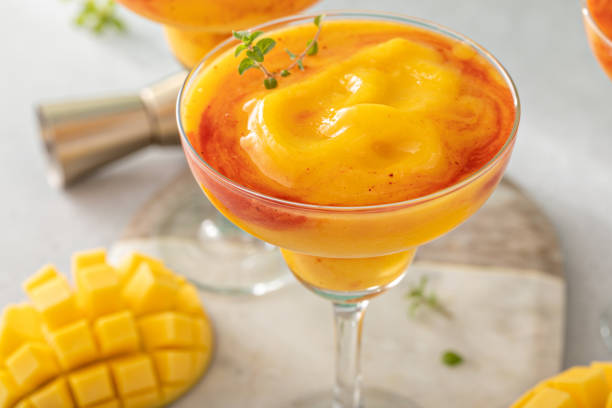
Chamoy rimmed drinks. Moms and dads love chamoy, too!
The runny version of this paste, also known as “chamoy rim paste” or just “rim paste,” is a unique way to kick up the flavor of your favorite spirits.
If you want to incorporate chamoy into your drink lineup, you can try our Chamoy Rim Dip Paste. This sticky rim paste makes the perfect rimmer for micheladas, beer, margaritas mixed cocktails, or aguas frescas. Cover in chili powder, lime juice, salt and you have the best recipe for a Sunday afternoon.
This paste has the perfect balance and texture to dip in fresh fruit, veggies, and potato chips. Chamoy gummies drenched in paste and chili powder are to die for!
2. Using Chamoy Sauce
Chamoy sauce is the most classic variation out there. Red chamoy is the most popular but different flavors and colors are now available for all palettes, like dark brown for tamarind based chamoy or green for a green apple-based flavor.
Mexican chamoy sauce is so versatile it can be drizzled over anything in your pantry. As a marinade or grill sauce, chamoy can be used with practically any meat.
For real! Got any fruits or veggies? Use chamoy sauce as a light dip. Got any crunchy potato chips or nuts? Shower them in chamoy. Craving shaved ice or popsicles? Drench them in chamoy!
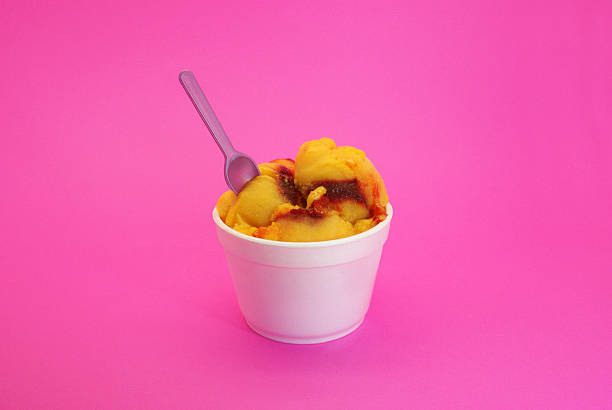
You’re never too old to enjoy chamoy.
Thanks to its multipurpose use, there’s no doubt why chamoy sauce is a favorite among Mexicans. No matter the age, kids, adults and grandparents have savored the delight of this bright red liquid for generations.
Nowadays, you can find chamoy sauce mixed with a variety of foods, like gummy bears and pickles. Our Chamoy Pickle Kit is the perfect combination of sour and tangy.
Soak the pickle in the Lucas Gusano Chamoy sauce, then wrap it with the Fruit By The Fruit and the Skwinkles Salsagheti gummies. Add loads more of the chamoy sauce then sprinkle as much of the Lucas Powder and crushed Takis as you want! Salt and lime go perfectly with this recipe.
3. Using Chamoy Powder
There’s nothing quite like a spicy powder to adorn your favorite snacks or drinks. Chamoy powder is the savory, sweet, and spicy powdered delicacy (or polvito) that goes well on its own.
Just ask your Mexican neighbor! They most likely liked chamoy powder from their tiny hand as a kid or devoured it directly from the little packet.
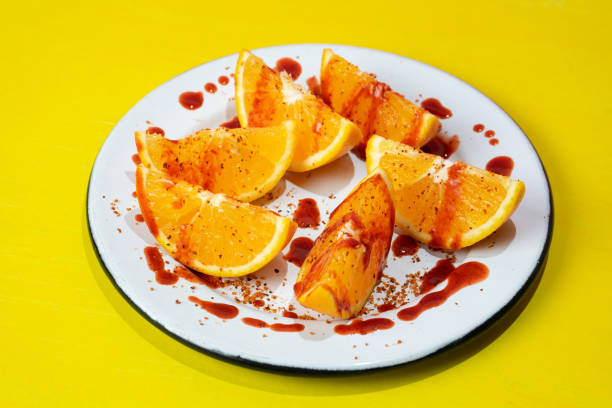
Hot sauce? Make chamoy your go-to condiment to enhance all the flavors on your table.
Chamoy powder is used to cover any kind of candy, from sugary belts and gummies to lollipops and dried fruits. This addicting powder is also great sprinkled on fruits, veggies, and any kind of chips, like Cheetos or salty Lays.
Want to spice things up? Choose your favorite snacks. We’ll do cacahuates japoneses, Takis, and Doritos. Mix them all in a big bowl. Drizzle chamoy sauce, hot sauce, fresh lime juice, and salt, then top with a generous dusting of chamoy powder.
As you noticed, eating chamoy is easy. Enjoy with your favorite telenovela or sunday football!
